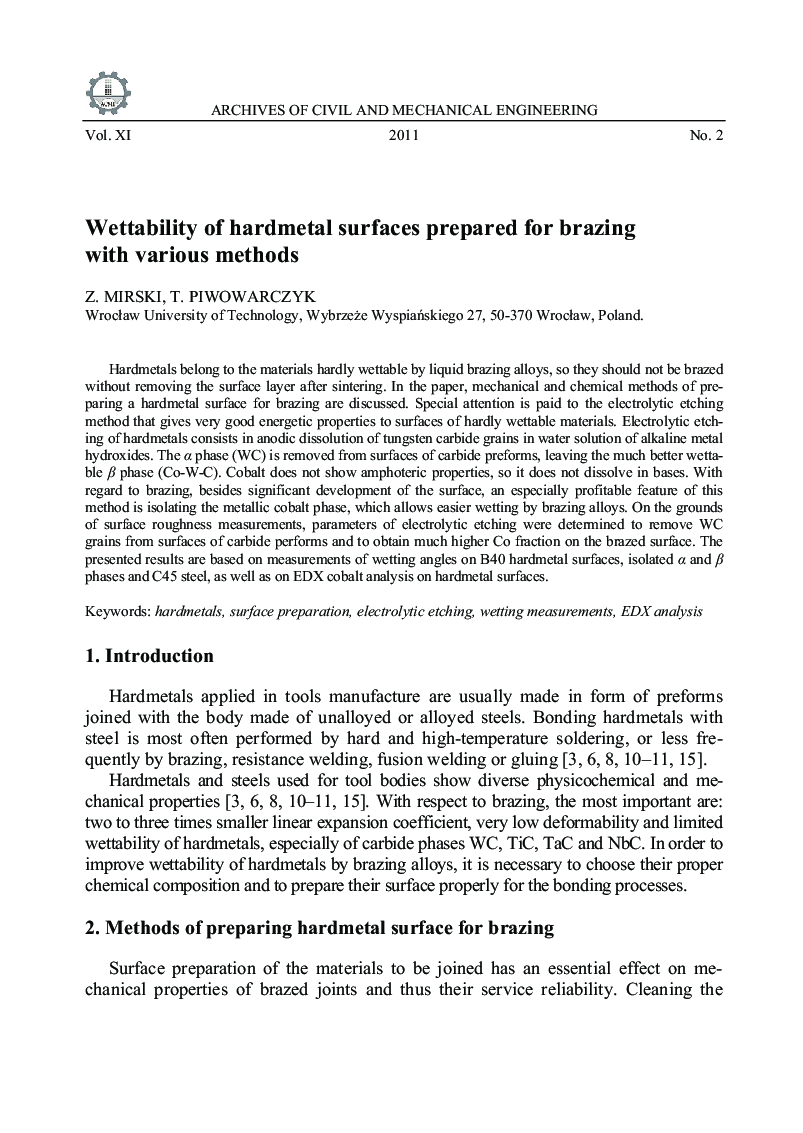| Article ID | Journal | Published Year | Pages | File Type |
|---|---|---|---|---|
| 246164 | Archives of Civil and Mechanical Engineering | 2011 | 9 Pages |
Hardmetals belong to the materials hardly wettable by liquid brazing alloys, so they should not be brazed without removing the surface layer after sintering. In the paper, mechanical and chemical methods of preparing a hardmetal surface for brazing are discussed. Special attention is paid to the electrolytic etching method that gives very good energetic properties to surfaces of hardly wettable materials. Electrolytic etching of hardmetals consists in anodic dissolution of tungsten carbide grains in water solution of alkaline metal hydroxides. The α phase (WC) is removed from surfaces of carbide preforms, leaving the much better wettable β phase (Co-W-C). Cobalt does not show amphoteric properties, so it does not dissolve in bases. With regard to brazing, besides significant development of the surface, an especially profitable feature of this method is isolating the metallic cobalt phase, which allows easier wetting by brazing alloys. On the grounds of surface roughness measurements, parameters of electrolytic etching were determined to remove WC grains from surfaces of carbide performs and to obtain much higher Co fraction on the brazed surface. The presented results are based on measurements of wetting angles on B40 hardmetal surfaces, isolated α and β phases and C45 steel, as well as on EDX cobalt analysis on hardmetal surfaces.
